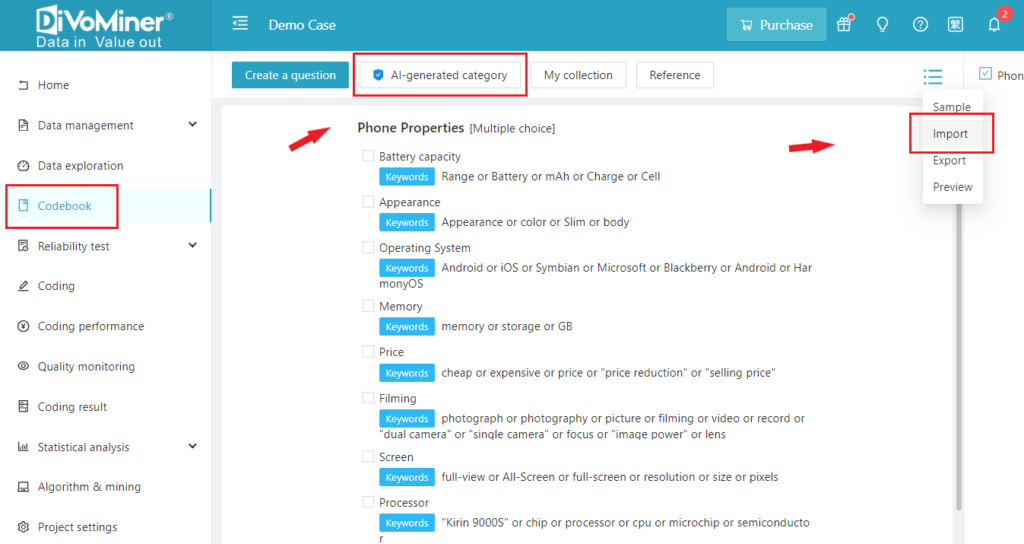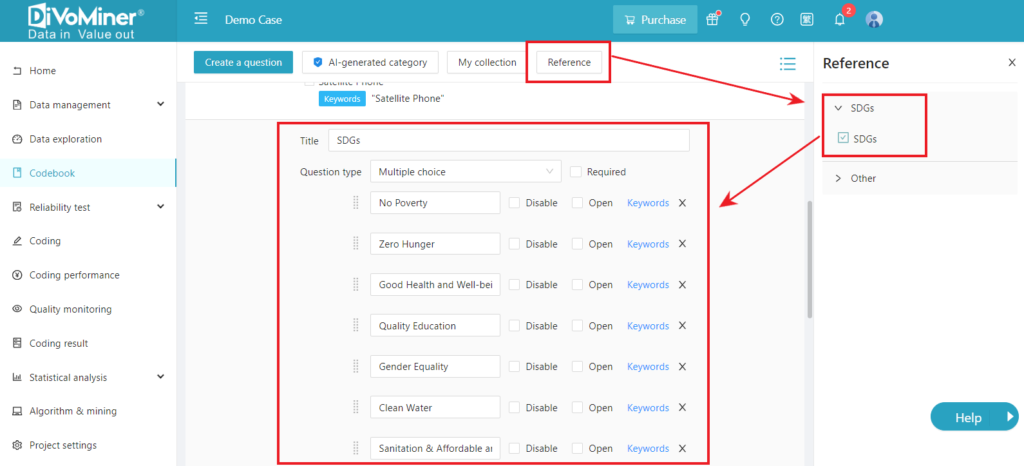Codebook categories should typically be set based on your research objectives and framework. It is recommended to first clarify your research needs and approach.
Methods for creating codebook categories:
- Create codebook categories based on theory or previous research findings
- Researchers create codebook categories based on common sense, experience, and research objectives
- Researchers can refer to codebook categories from other studies and modify them to create categories that are suitable for their current project
- Explore discoveries from automated algorithm results
- AI-generated codebook categories
Practical advice: As a general rule, it is better to have more codebook categories than fewer. Once the analysis unit is determined, it is easier to combine several smaller codebook categories into one larger category than to divide one larger category into several smaller ones.
With the help of AI technology, DiVoMiner® can assist in automating data processing, constructing a scientific and efficient category framework, improving coding accuracy, and ensuring the quality of data results. This makes research more efficient and accurate. Simply click on [AI-generated category], input your research subject, and click [Start AI Codebook]. AI will generate a set of codebook categories for the researcher’s guidance. You can also use the “Import category” feature to easily import codebook into your project, eliminating the tedious manual input process.

In addition, the DiVoMiner® platform provides a comprehensive Demo Project and codebook categories for reference. You can find them under [Codebook] – [Reference]. By clicking on a specific category question, you can copy it to the setup area. It is recommended to modify and adapt these categories to create your own categories based on your research needs.

